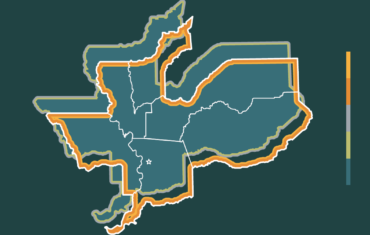Forestry Management Careers: A Critical Need
On April 28, Valley Vision hosted a virtual Forestry Management Regional Advisory to bring stakeholders and industry partners together to discuss the field’s current state, future projections, and areas of growth. Critical land management challenges such as wildfires, droughts, and the impact of invasive species contribute to the high demand for forestry management job applicants. However, labor market data and research detail a prominent gap between this need and the availability of candidates in the field.

This event featured labor market projections from Melissa Kovacs, Senior Project Analyst at the Center of Economic Development, CSU Chico, and Ebony Benzing, Research Manager at the North/Far North Centers of Excellence, and an industry panel that included:
- Ann Anderson, Beale Mountain Forestry, Owner & Forester
- Jeremy Dorsey, U.S. Forest Service, Hume Lake Ranger District & Sequoia National Forest, District Ranger
- John McCarthy, CAL FIRE, Forester & Wood Products/Bioenergy Program Administrator
- Tony Ortiz, Mountain Enterprises, Field Safety Specialist
- Craig Ostergaard, Sierra Pacific Industries, South Sierra Reforestation Manager
At the beginning of the event, Kovacs presented findings from the 2021 Forest Sector Workforce Needs Survey created in partnership with the Statewide Wildfire and Forest Resiliency Task Force. This survey yielded 113 responses from forestry management employers across the state and sought to identify key challenges and needs within the industry. The research revealed a sizable gap in the forestry industry’s workforce with the majority of respondents indicating their organization is currently hiring for 1-5 open positions with the majority looking to hire either immediately or within the next 12 months. Another important result was the indication of three major obstacles to filling these positions; high cost of living (45.59%), a small pool of candidates in the area (24.56%), and lack of available housing (12.81%).
Benzing provided regional labor market information, demonstrating forestry management jobs are expected to grow by an average of 6% by 2025 in the Greater Sacramento region. The strongest occupational demand is in professional positions which include environmental scientists, soil & plant scientists, and foresters. Management positions are projected to have the highest percentage growth, with the second-largest increase slated to come from specialty positions (fallers, log graders/scalers, surveyors, tree trimmers, and mapping technicians).
Panelists encouraged students and educators to push for early exposure to forestry management careers and real-world, hands-on experience. Paid internships are a valuable way for prospective applicants to gain an understanding of the demands and nature of these jobs. Although these positions are generally during the summer months, panelists indicated winter is the best time to begin the internship and job search process. Anderson of Beale Mountain Forestry mentioned job shadowing as an alternative to internships, as they are a quicker, less-demanding method to show the daily responsibilities and expectations of someone who works in the industry.
Panelists agreed that interpersonal skills are of great importance and demand in the forest industry. Communication, time management, organization, and teamwork are integral skills across all occupations creating an opportunity for forestry management education programs to focus on expanding soft skill development. In addition to strengthening these necessary skills, Steven Casperite, Assistant Principal at the Placer School for Adults, discussed a pilot program developed in partnership with Mountain Enterprises to expand the talent pipeline by offering contextualized English Language education concurrent with on-the-job forestry management training to serve immigrants and refugees. Casperite also commented that the opportunity to extend training opportunities to incarcerated individuals prior to release can also funnel more candidates into the industry. As Casperite said, “There are a lot of opportunities and employees out there that we can be putting to work—that want to work—but we’ve got to remove the barriers.”
Valley Vision’s employer and industry advisories are funded by Los Rios Community College District with Strong Workforce Program funds. Additionally, the Capital Region’s four workforce boards co-sponsor the advisories; SETA/Sacramento Works, Golden Sierra JTA, YoloWorks, and North Central Counties Consortium.
To keep up with Valley Vision’s work to advance a future-ready workforce in the Sacramento region, subscribe to our 21st Century Workforce email newsletter!
Danielle Susa is a Valley Vision Project Associate supporting initiatives within the 21st Century Workforce impact area.
Renee John is the Director of Workforce Development managing initiatives within the 21st Century Workforce impact area.




